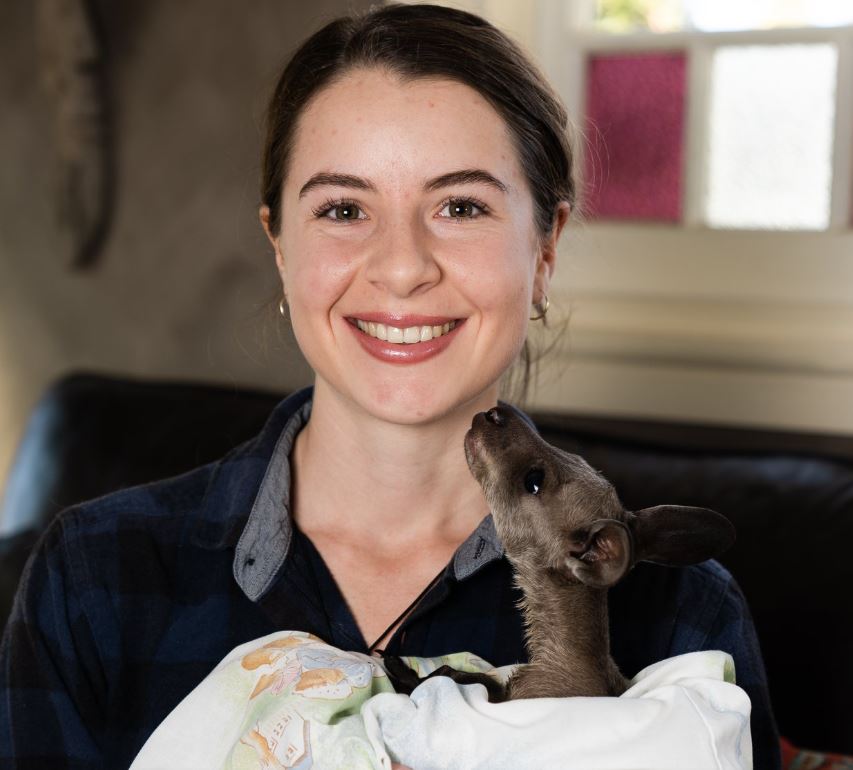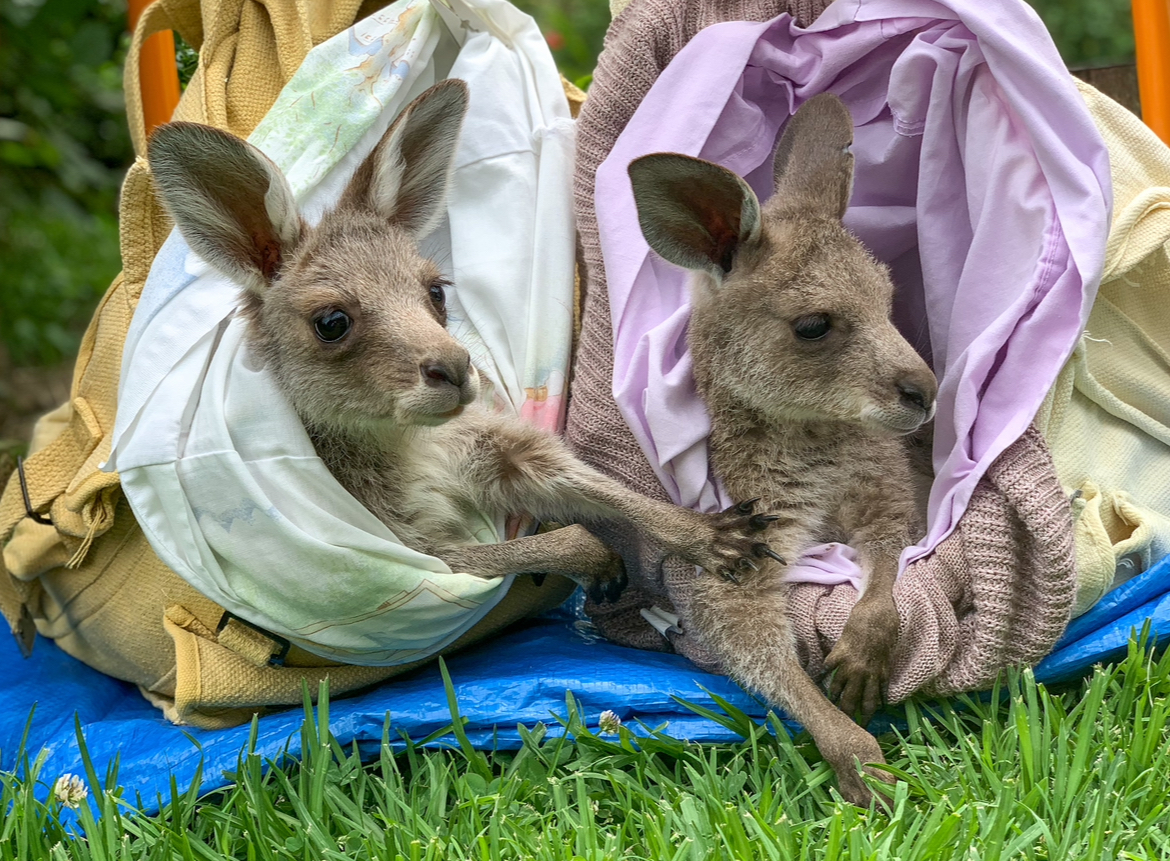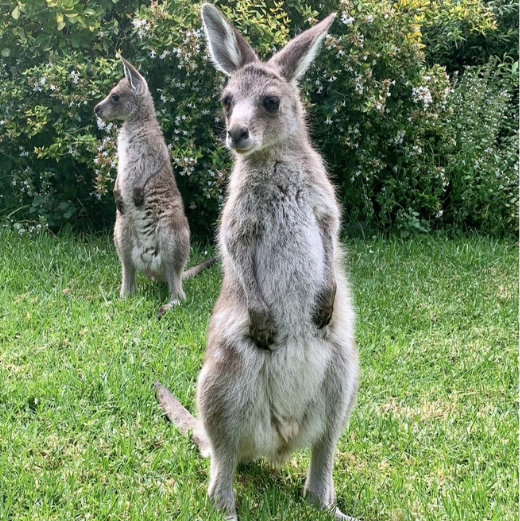
What it takes to rehabilitate for the wild
Tuesday, September 24, 2024
4AM wake ups and around the clock feeds, WIRES Wildlife Volunteer, Georgia gives us a special insight on what it takes to rehabilitate for the wild.
Thank you so much for your time today Georgia! Which Australian species do you usually care for?
I specialise in macropods. In our area, the most common macropod species that come into care are Eastern Grey Kangaroos, Eastern Wallaroos, Red-necked Wallabies and Swamp Wallabies.
How many rescued native animals would you normally care for in a year?
When raising young joeys I always prefer to have them in pairs or small groups for companionship. In 2023, I handled well over 100 cases and this year I've already attended over 40 rescues. Not all of these end up in my care, but many do.
What's involved in the daily care of these rescued native animals?
Macropod joeys require specialised care throughout all stages of their development. For example, younger joeys including 'pinkies' and 'velvets' may need feeding every 3-4 hours around the clock, often requiring approximately 6 feeds within 24 hours (which means waking up at all hours!).
Young joeys also require careful temperature regulation using devices such as heat mats, thermostats, and thermometers, which need careful monitoring around the clock. As they grow, the frequency of feeds decreases, and they are able to thermoregulate themselves, though they may still need some support at times - but my day often still starts as early as 4:00 or 5:00 AM.

Photo above: Bruno and Olly two of the many young macropods who've been in Georgia's care
Can you describe a typical feeding routine?
A typical feeding routine for a macropod includes bottle feeding (with a teat specific for the species and age), gentle cleaning if needed, toileting, changing pouches (I can’t tell you how many loads of washing there are!), moisturising if furless, and providing enrichment activities such as sun exposure for vitamin D and supervised hopping to strengthen their muscles and bones. As they mature, they spend more time in supervised, predator-proof enclosures where although they still have their pouches, they can also explore, exercise, interact with one another, and begin to adapt to an environment closer to their natural habitat.
Can you describe the food a joey in care would need?
Their diet consists of species and age specific milk formulas such as Wombaroo, with the milk composition and quantity adjusted as they mature. Preparing the formula is quite a task in itself, requiring careful precision with measuring, and all bottles, teats, and equipment needing to be meticulously cleaned and sterilised. In addition to formula, joeys need fresh browse provided daily, such as grasses, roots (I call these “dirt-bombs”), bark, termite mounds, and native foliage. Depending on the season, I may supplement their diet with chaff, grassy hay, and specialised macropod pellets. Natural food sources are always preferred due to the highly specialised diets of macropods. Incorrect feeding can lead to serious health issues, including nutrient deficiencies or toxicity, disturbances to the gut microbiome causing gastrointestinal upset, and even the development of diseases such as lumpy jaw (formally known as macropod progressive periodontal disease).
How long are they usually in care for?
Joeys can remain in care for several months, with eastern grey kangaroos, for example, not weaning until around 18 months of age. Even as they approach soft release and direct interactions with them decrease, extensive cleaning, maintenance, and monitoring are still required. During this time, they are also particularly vulnerable to stress-related diseases, underscoring the importance of continued vigilance.
How much does it cost to feed a native animal in care?
The cost of feeding an animal in care can vary widely based on the species, age, and specific needs. For macropods, expenses often include specialised formulas, feeding equipment such as bottles and teats, supplement feeds, cleaning supplies, bedding/pouches, veterinary/medical expenses, and set-up and maintenance costs for enclosures. The costs can add up to several thousands, especially for long-term care.
It sounds like a huge amount of work but can you explain why only trained wildlife carers should rescue and rehabilitate injured and orphaned wildlife?
As you can see, macropods require intensive care throughout all stages of their development. They are fragile, highly sensitive, and easily stressed animals, with complex physical and emotional needs - even minor errors in their care can lead to rapid deterioration in health. For this reason, it is crucial that only authorised and trained carers handle their rehabilitation. Such expertise ensures that the macropods receive the highest standard of care, giving them the best chance of a successful return to the wild.

Photo above : Bruno and Olly learning to graze.
Thank you so much Georgia – we truly appreciate your dedication and care for rescued native animals.
Recent Posts
WIRES launches its first wildlife rehabilitation centre - Mullyang
WIRES Emergency Response in the wake of ex-tropical cyclone Alfred
International Women’s Day Volunteer Spotlight: Shelley
Tropical Cyclone Alfred – Emergency Wildlife Advice
Interview with WIRES Training and Development
Celebrating Women in Science: The Journey of Holly, Wildlife Conservationist and WIRES Team Member
